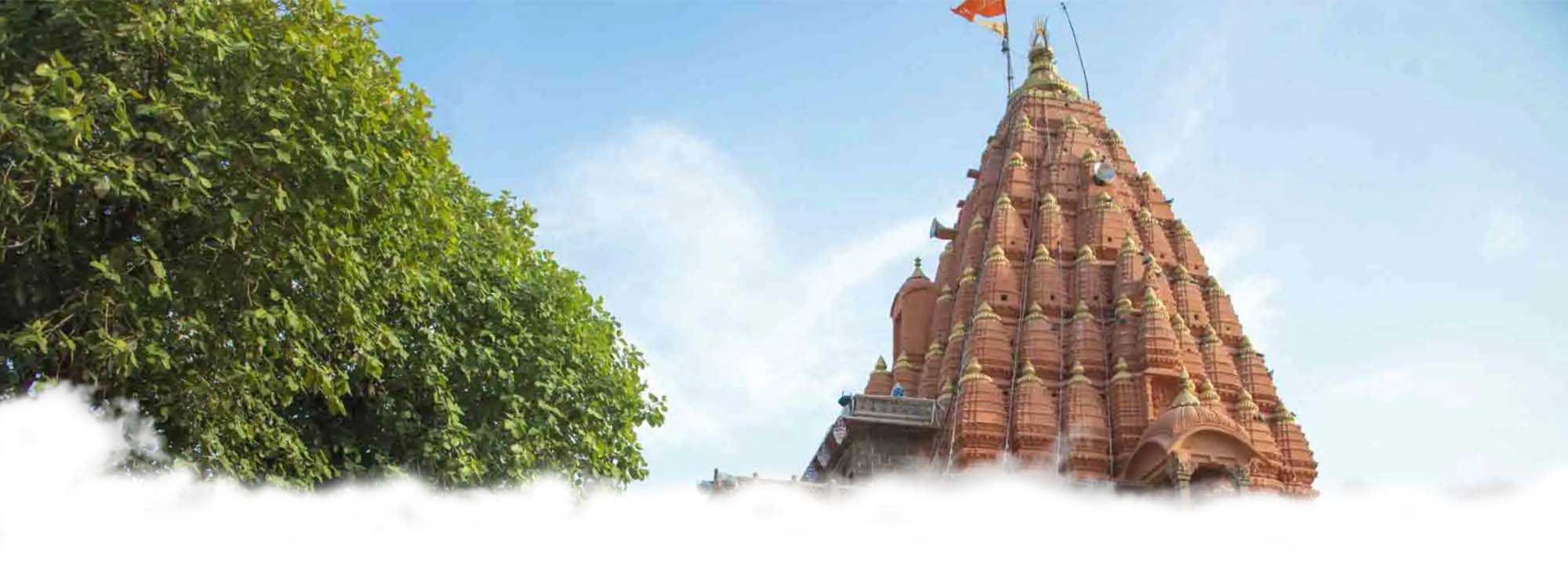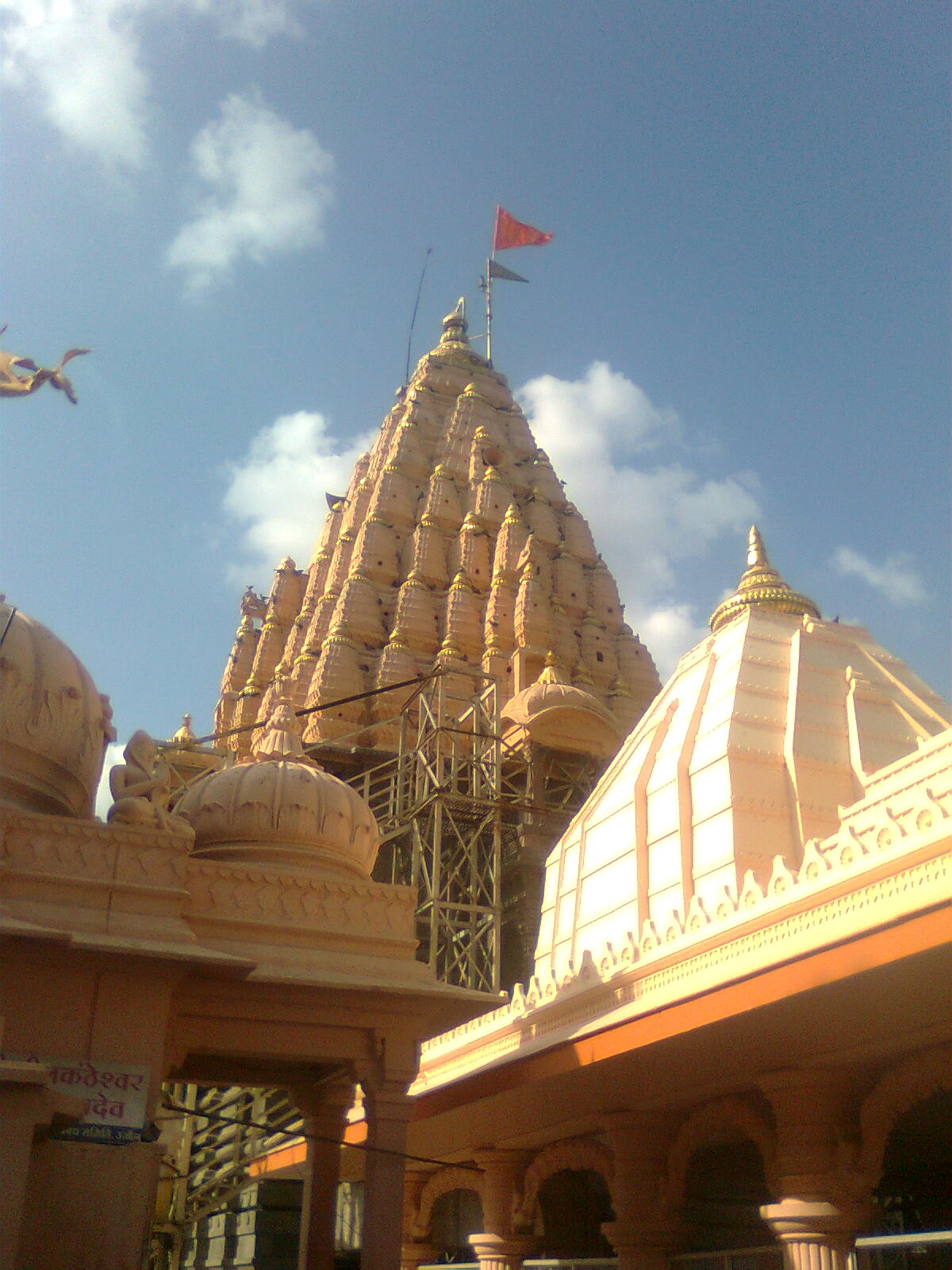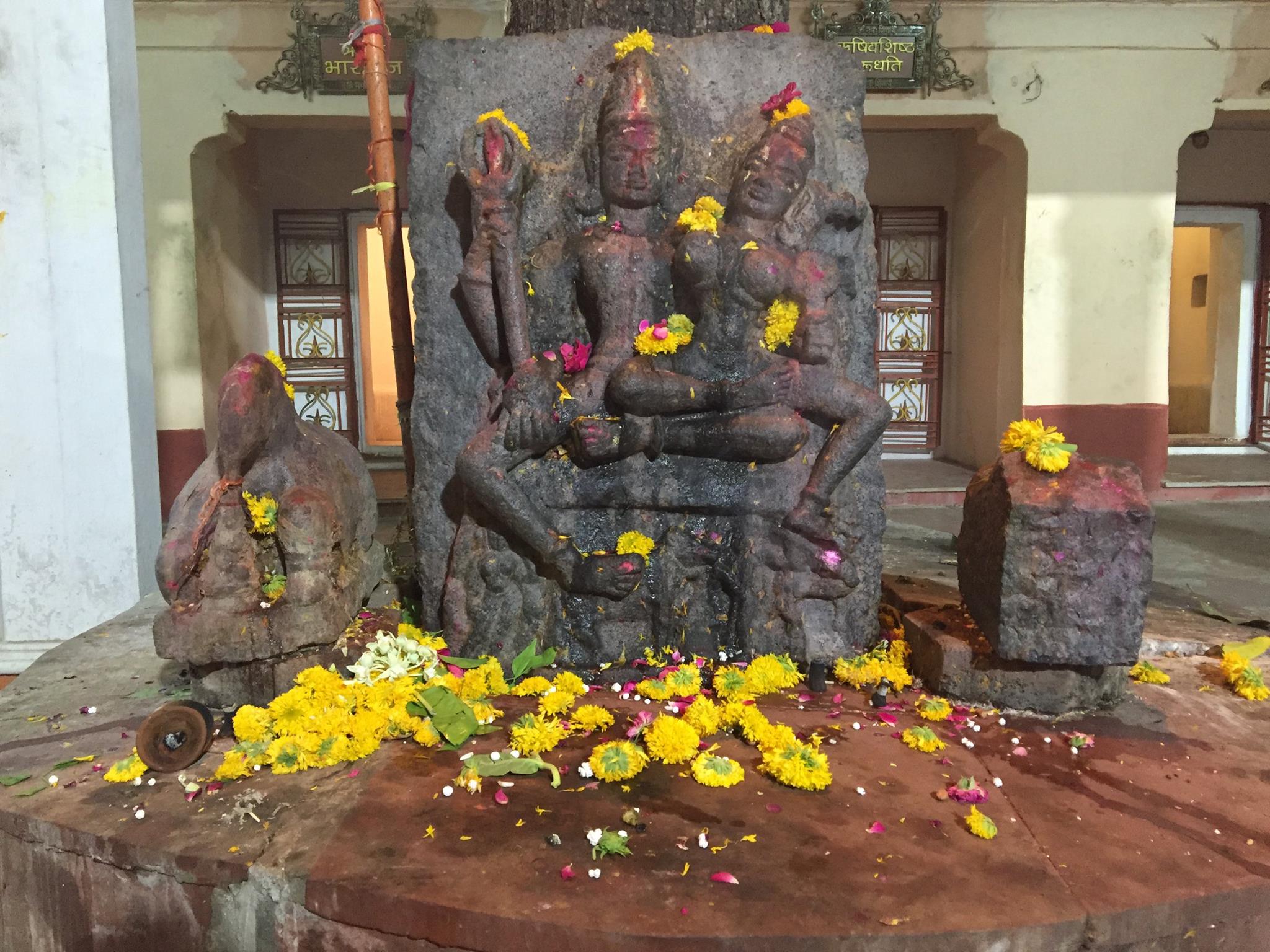
Mahakaleshwar Temple, Ujjain
Lord Mahakaleshwar resides in the sacred city of Ujjain, India and is the third Jyotirlinga.
History Behind the Mahakaleshwar Temple
Such is the grandeur of the divine home of Mahakala, the lord of time, who thrones the Mahakaleswar temple of Ujjain. The temple is one of the revered 12 Jyotirlingas in the country, and the Maha Shiva Lingum at the temple is considered to be Swayambhu (born from itself).
The beautiful temple has endured the perils of time and still emerged as a testament to the faith of Shiva devotees. You won’t get enough of the artistic excellence bouncing off its walls and the colossal idol of Lord Mahakal whose sight is a blessing in itself.
Lakhs of Shiva Bhakts attend the famous Bhasma Aarti at the break of every dawn. From tales of miracles and unanswered mysteries to the unshakable faith of many, Mahakaleswar’s Shikhar is witness to a lot of divine happenings.
As per the history of Mahakaleshwar Temple, Prajapati Brahma himself established the first temple at the site. The coins recovered at Ujjain have the mark of Lord Shiva on them. According to several poetic texts, in the Paramara period, invaders destroyed the temple. Later, Udayaditya and Naravarman rebuilt it.
According to the ancient scripture Sthalapuranam, King Chandrasena was a devotee of Shiva. A young boy named Shrikhar heard his prayers to the god and wanted to join him. However, people did not let him do it, and sent him out of the city. Also, Shrikhar heard the plans of rival kings Ripudhamana and Singhaditya to attack the city with the help of the demon king Dushan.
Moreover, Dushan had a blessing of invisibility from Brahma. So, Shrikhar and a priest named Vriddhi prayed to Lord Shiva for help. The enemies arrived at Avantika (Ujjain) and started torturing the people. They banned all Vedic Dharmanushtan activities in the city. The people started praying to Lord Shiva for help.

Devotees also believe that when Dushan started attacking Avantika, the ground split near the statue of Parvati and Lord Shiva came out of it as Mahakaal. He burnt the demons with just one grunt. Adhering to the request of the people of Avantika, Lord Shiva then decided to stay there as the chief deity of Avantika.
The History of the Temple
The ancient walls of Mahakaleswar are a witness to many attacks and destruction at the hands of foreign invaders. In the early 13th century, the temple was demolished by Iltutmish, the third ruler of the Slave dynasty, while he was raiding Ujjain. It is said that the sacred Jyotirlingam was completely dismantled by the invader and thrown into a neighboring pond (later known as Koti Teerth Kunda). The invader also stole some valuable structures having great religious significance from the temple.
The temple later saw a glorious revival in the reign of Maratha General Ranoji Shinde during the 4th and 5th decade of the 18th century. The Diwan of Ranoji used his wealth to build the present structure of the temple in Maratha style architecture. The temple was managed by Maratha administration for some decades after which a trust called Dev Sthan shouldered the responsibility. After India’s independence in 1947, the collectorate office of Ujjain replaced Dev Sthan trust as the temple administrator.
Mahakaleswar is the symbol of eternal Moksha and unbreakable faith for staunch Shiva devotees and Hindu worshippers. The shrine is also one of the 18 Maha Shakthi Peethas. As per Hindu mythology, Goddess Sati (Shiva’s first wife) gave up her life as a rebellion against her father’s objection to her marriage with Shiva. To honor her death, Lord Vishnu cut her body in several parts which turned into shrines when they fell on earth. These shrines were called Shakthi Peethas and it is believed that her upper lip fell in Mahakaleswar.
It is believed that whoever worships at the temple and asks for something with a pure heart, his wish always comes true. Due to its divine aura and spiritual bliss, the temple attracts millions of devotees round the year. More than 1.5 lacs sadhus visit the temple every year to relish the infinite nature of Mahakal.
Architectural Significance
Mahakaleswar is a beautiful blend of Maratha, Chalukya, and Bhumija styles of architecture. The temple architecture of Marathas was a renaissance of the medieval-western Chalukyan style and Bhumija style, featuring multi-story structures and intricate carvings. The five-story temple building supported by massive walls will leave you in awe at its grandeur.
There is a large pond near the temple complex called Koti Teertha Kunda. You will also find holy mantras, hymns, and songs in praise of Lord Shiva scribbled all over these colossal walls. As you move towards the ground floor Sanctorum called the Garbhgriha, you will see the divine idol of Omkareswar Shiva above the Mahakal shrine. Arcane silver plates adorn the roof of the Garbhgriha. There are beautifully carved images of Goddess Parvati, Lord Ganesha, and Lord Kartikeya in the north, west, and east of the sanctum sanctorum.
If you turn to the south, you’ll find the image of Nandi, a revered bull calf, and the vehicle of Shiva. On the third story lies the sacred idol of Nagchandreswar (the king of snakes who adorns Shiva’s neck like a garland) which is only open for Darshan on Nagpanchmi, the festival that worships snakes.

Rituals and Ceremonies for Mahakaleshwar
Several religious ceremonies and rituals are part of the glory of Mahakaleswar Temple. The biggest ritual is the Bhasma Aarti which happens daily in the temple complex and attracts a sea of devotees every morning before sunrise. During this sacred ritual, the Priests apply the ash collected from the ghats of the neighboring river Shipra to the Jyotirlinga.
You will be surprised to know that Mahakaleswar is the only lingam out of the 12 Jyotirlingas where such a ritual takes place. This uniqueness makes it all the more special and auspicious to be a part of the Bhasma Aarti. The crowd is so large that devotees have to pre-book a ticket for the Aarti the day before.
Besides the everyday dose of spirituality, there are several other festivities you can look forward to in Mahakaleswar. Some of them include Nitya Yatra and Sawari. The Nitya Yatra requires a devotee to take a holy bath in the Sipra river and then visit the idols of Mahakaleswar and Nagchandresvara.
This ritual aims to seek blessings of longevity and prosperity from Mahakal. And Sawari is a grand procession of Lord Shiva which passes through the streets of Ujjain every Monday. It is carried out so that common people can get a Darshan of Shiva and the Lord removes all evils from Ujjain. The Sawari on the fortnight of Bhadrapada attracts lakhs of people from all around the country.
Mystical Experiences
The temple of Mahakaleswar is the center of many mysterious stories and incidents. According to some, Lord Shiva himself appeared in the temple during one of the Bhasma Aartis. It got captured in a video that went viral on the internet. However, some deemed it to be just an illusion.
Locals even claim that the CCTV camera in the complex captured a strange figure worshipping the lingam at night. Shiva Bhakts believe that it could be an otherworldly spirit who took salvation in Lord Shiva’s temple because he is known to bless both humans and spirits.
There is another story that is famous about Mahakaleswar. Locals say that when former president Indira Gandhi lost the elections, she visited the temple. Mrs. Gandhi requested for a special prayer in the temple to win the next elections. Since women are not allowed inside Garbhgriha, she waited outside for an hour. Devotees claim that because of the blessings of Lord Shiva, she won elections the next time.
Many other politicians like Digvijay Singh and Uma Bharti also visited Mahakaleswar and later won the elections.
Interesting Facts About Mahakaleshwar
- As mentioned in Surya Siddhanta, a 4th-century astronomical disquisition, Ujjain lies at the precise spot where the Tropic of Cancer intersects the zero meridians of longitude. That’s why Hindu devotees claim that Mahakaleshwar Jyotirlingam is right on the navel of the earth.
- Locals consider Lord Shiva as the king of Ujjain and no authority figure like the CM, Prime Minister, and President is allowed to stay in Ujjain at night. People follow this because the city can only have one and only king. Many say that Vikramaditya also ruled Ujjain from the boundary of the city.
- According to a special mantra mentioned in Vedic texts, there are three main lingas in Trilok (the three worlds). Taarka Ling in heaven, Hatkeshwar Ling in hell (Pataal), and Mahakaleswar in Mrityu Lok (the earth).
- Mahakaleswar is the only jyotirlinga which is Dakshinmukhi (facing south). This unique feature holds utmost importance for many tantric practitioners (a community of saints who indulge in occult practices)
